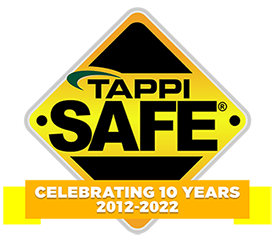 Search
Search
Use the search bar or filters below to find any TAPPI product or publication.
Filters
Content Type
Publications
Level of Knowledge
Committees
Collections
Journal articles

Optimization of combustion air delivery, TAPPI JOURNAL, September 1998, Vol. 81(9)
Optimization of combustion air delivery, TAPPI JOURNAL, September 1998, Vol. 81(9)
Journal articles

RDH pulping of southern hardwoods, TAPPI JOURNAL, May 1996, Vol. 79(5)
RDH pulping of southern hardwoods, TAPPI JOURNAL, May 1996, Vol. 79(5)
Journal articles

Magazine articles

Recovery boiler back-end heat recovery, TAPPI Journal March 2023
ABSTRACT: Sustainability and efficient use of resources are becoming increasingly important aspects in the operation of all industries. Recently, some biomass-fired boilers have been equipped with increasingly complex condensing back-end heat recovery solutions, sometimes also using heat pumps to upgrade the low-grade heat. In kraft recovery boilers, however, scrubbers are still mainly for gas cleaning, with only simple heat recovery solutions. In this paper, we use process simulation software to study the potential to improve the power generation and energy efficiency by applying condensing back-end heat recovery on a recovery boiler. Different configurations are considered, including heat pumps. Potential streams to serve as heat sinks are considered and evaluated. Lowering the recovery boiler flue gas temperature to approximately 65°C significantly decreases the flue gas losses. The heat can be recovered as hot water, which is used to partially replace low-pressure (LP) steam, making more steam available for the condensing steam turbine portion for increased power generation. The results indicate that in a simple condensing plant, some 1%•4% additional electricity could be generated. In a Nordic mill that provides district heating, even more additional electricity generation, up to 6%, could be achieved. Provided the availability of sufficient low-temperature heat sinks to use the recovered heat, as well as sufficient condensing turbine swallowing capacity to utilize the LP steam, the use of scrubbing and possibly upgrading the heat using heat pumps appears potentially useful.
Journal articles

Magazine articles

Displacement washing of softwood pulp cooked to various levels of residual lignin content, TAPPI Journal September 2021
ABSTRACT: This study investigates the influence of the degree of delignification of kraft spruce pulp cooked at seven different kappa numbers, ranging from 18.1 to 50.1, on the efficiency of displacement washing under laboratory conditions. Although the pulp bed is a polydispersive and heterogeneous system, the correlation dependence of the wash yield and bed efficiency on the Péclet number and the kappa number of the pulp showed that washing efficiency increased not only with an increasing Péclet number, but also with an increasing kappa number. The linear dependence between the mean residence time of the solute lignin in the bed and the space time, which reflects the residence time of the wash liquid in the pulp bed, was found for all levels of the kappa number. Washing also reduced the kappa number and the residual lignin content in the pulp fibers.
Journal articles

Magazine articles

Ultrastructural Behavior of Cell Wall Polysaxxharides, TAPPI Journal April 2022
ABSTRACT: Considerable information on the ultrastructural organization of the plant cell wall and the supermolecular arragement of the cell wall components, in particular of cellulose, has been obtained with the electron microscope.
Journal articles

Cavitation-jet deinking: A new technology for deinking of recovered paper, TAPPI JOURNAL September 2014
Cavitation-jet deinking: A new technology for deinking of recovered paper, TAPPI JOURNAL September 2014
Journal articles

Co-cooking moso bamboo with hardwoods, TAPPI JOURNAL June 2014
Co-cooking moso bamboo with hardwoods, TAPPI JOURNAL June 2014
Journal articles

AOX formation in ECF bleaching at different kappa numbersâ??influence of oxygen delignification and hexenuronic acid content, TAPPI JOURNAL, September 2002 (141KB)
AOX formation in ECF bleaching at different kappa numbers—influence of oxygen delignification and hexenuronic acid content, Solutions! & TAPPI JOURNAL, September 2002 (141KB)
Journal articles

Arundo donax l. reed: new perspectives for pulping and bleaching 1. raw material characterisation, TAPPI JOURNAL, January 2001, Vol. 84(1)
Arundo donax l. reed: new perspectives for pulping and bleaching 1. raw material characterisation, TAPPI JOURNAL, January 2001, Vol. 84(1)
Journal articles

New process produces highly concentrated polysulfide liquor by electrolysis of white liquor, TAPPI JOURNAL, February 2001, Vol. 84(2)
New process produces highly concentrated polysulfide liquor by electrolysis of white liquor, TAPPI JOURNAL, February 2001, Vol. 84(2)






